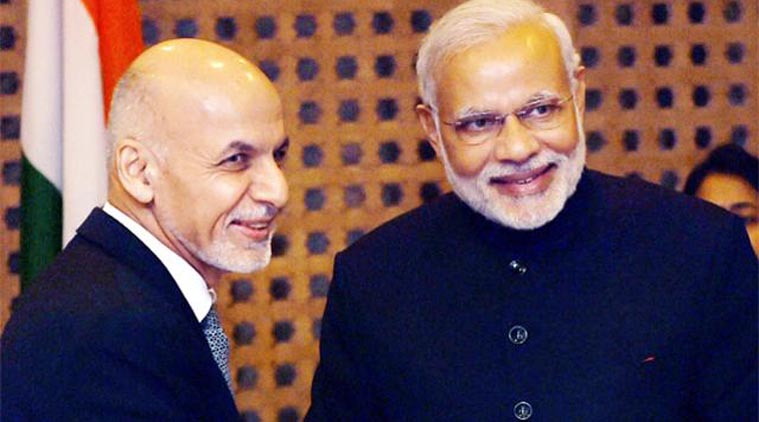Why PM Modi’s Kabul visit matters
Though the Prime Minister’s official reason for visiting Kabul is to inaugurate the Parliament building India gifted to Afghanistan after 9/11, its significance is far larger.
 Afghanistan President Ashraf Ghani (Left) with Indian Prime Minister Narendra Modi. (Right) – (Source: PTI)
Afghanistan President Ashraf Ghani (Left) with Indian Prime Minister Narendra Modi. (Right) – (Source: PTI)
When Prime Minister Narendra Modi lands in Kabul later this month, he will arrive in a war-torn country facing its most serious crisis since 9/11.
Large parts of the north-eastern Helmand region have fallen to the Taliban, adding to the reverses in Kunduz and Kandahar—leading more and more people to ask if the new Afghanistan born after 9/11 can survive.
Though the Prime Minister’s official reason for visiting Kabul is to inaugurate the Parliament building India gifted to Afghanistan after 9/11, its significance is far larger. Afghanistan is looking to the world for assurances that it will not allow the Taliban tide to sweep away their lives—making the message Modi gives them critical.
For Afghanistan, the problem is two-fold. President Ashraf Ghani, pushed by the Western powers which backed his rise to power, had staked his all on talks with the Taliban. Pakistan, from where the Taliban operate, was key to the process. Pushed by the United States and United Kingdom, Pakistan was to have brought the Taliban leadership to the table, swapping their guns for a share of political power.
The script, however, has gone horribly wrong. Instead of compelling the Taliban leadership to talk, it’s allowed their largest offensive in years to surge forward. In effect, it’s stringing Afghanistan along, until the Taliban bring the government to its knees.
Islamabad’s compulsions are simple. Pakistan can’t risk the Afghan Taliban joining hands with the Pakistani Taliban networks, and the Islamic State led by Khan Saeed, who want to overthrow the government. That could end in a war larger than the Pakistan army is prepared to fight. It is simply in no position, therefore, to restrain the Taliban.
Put bluntly, the Taliban’s reins aren’t in Pakistan’s hands—they’re tied, instead, to a certain other intimate part. There’s little chance, therefore, that the reins will be pulled.
For Afghans, that leaves the option of fighting which is easier said than done. The country’s armed forces are, at best anemic—and now, without the colossal resources of the United States forces once deployed there, unable to hold back the Taliban. Afghanistan has neither a proper Air Force, nor an independent communications intelligence and surveillance capacity.
The arithmetic explains why Afghanistan’s forces can’t hold back the Taliban everywhere. In Jammu and Kashmir, India had deployed 337,000 troops to fight the insurgency, not counting police and paramilitary forces, this in territory well-connected by road. Afghanistan has 325,000 army and police to defend six times the territory, with only a rudimentary road network.
India has listened to Afghanistan’s pleas for help, providing four ground-attack helicopters. It is also considering appeals for second-hand tanks, armoured transports and artillery—even at the cost of irking Pakistan.
This will, however, be only a small part of what Afghanistan needs, so Modi’s real challenge will be to push the world community, including regional powers Iran and Russia, to step up aid.
It’s a perilous road, which could end up leading India to involvement in a long, murderous war. The alternative, though, is giving Pakistan-backed Taliban a victory—a victory that would fuel the ambitions and resolve of jihadists across the region.






































